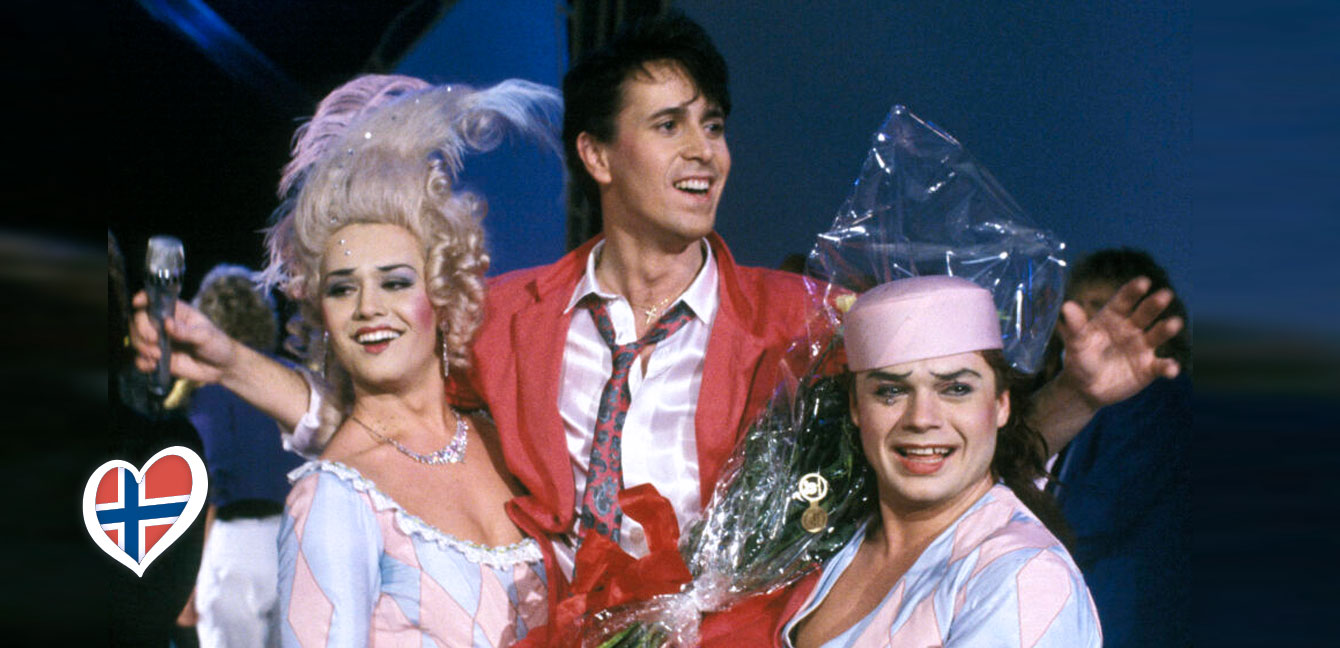Today, Eurovision is known for its campy performances and its celebration of LGBT+ contestants: from Dana International to Conchita Wurst. But their representation of queer artists goes back to the 80’s.
Picture this: the year was 1986, in the city of Bergen, Norway. The Eurovision song contest was about to take place. The list of performers included Norwegian singer Ketil Stokkan who was to perform his song titled “Romeo” (Yes – apparently ROMEO was at the Eurovision!)
Ketil Stokkan’s performance was about to be the first of its kind. It would be a collaboration with a troupe of local Norwegian drag queens called the “Great Garlic Girls”.
Terje Schrøder (IG: @terjeschroder), a drag queen and member of the group, worked very hard preparing for this moment. He was on every TV interview promoting this performance. He was deeply involved in the art direction of the show. The Great Garlic Girls were about to be on the biggest stage they had ever been on! This was huge.
It’s showtime! The performance starts, Ketil Stokkan jumps on stage to sing “Romeo.” Behind him are two members of Great Garlic Girls, Jonny Nyomen and Olav Klingen: one dressed up as “Romeo”, the other as a drag queen version of “Juliet”. The three of them perform one of the campiest Eurovision numbers at the time! Watch the performance here:
Not only was this a special moment for the Great Garlic Girls, but it was an important one for the representation of queer artists at Eurovision. Drag was exposed to a huge audience, which created both curiosity and acceptance. Soon enough, the Garlic ladies were booked, blessed, and busy! They performed their shows everywhere for many years to come in Oslo, New York, and everywhere in between.
This year, they celebrate 40 years of being the Great Garlic Girls! We interviewed the amazing Terje Schrøder to ask him about the famous Eurovision performance, and to talk to us about his career with the group. Read our interview below:

PÅ GULLSTOL: Ketil Stokkan & the Great Garlic Girls ble vinnere av den norske MGP-finalen med melodien «Romeo».
Hi Terje! How did the Great Garlic Girls start, and how did you think of the name?
We were at a party many years ago and decided to dress up in some curtains. There was a restaurant owner at that party who saw us and said we should perform at his restaurant. This was around 1980 or 1981.
We had meetings to find a name for the group, we thought of “The Star Sisters” or “The Surprise Sisters.” One day, a neighbour came to us with a salad. When he tasted the dressing of his salad he said “Sorry, there’s too much garlic, girls” – and that’s when we thought: that’s it! The garlic girls, the Great Garlic Girls. That’s how the name came out – from a salad!
What was it like in Norway in the 80’s when it came to drag acceptance?
We started doing shows in small theatres in Oslo in 1981. We had resistance in the beginning. People were sceptical of us. People didn’t know so much about what it meant to be gay. Not many people would come to see our shows. After the Eurovision song contest in 1986, everybody in Norway embraced us.

How did the collaboration with Ketil Stokkan come about?
I was his hairdresser at that time! He was getting a haircut at my salon and he asked me “What if we use the Great Garlic Girls in my performance for Eurovision?” I said that’s a very good idea. He was the one who went to the TV station and demanded that we perform with him.
Tell us about the concept of the performance.
We worked on the choreography with Simen, our choreographer, and we decided we wanted to have a “Romeo and Juliet” concept for the costumes, with the big Victorian wig, to create a romantic scene from the old days.
How nervous were you before this show?
We were all very nervous. We had Jonny and Olav performing onstage, I was working as PR, doing interviews on TV stations everywhere. Our group was so happy about doing this show – afterwards, we were all laughing, then crying, then laughing. It was a very special moment.
Today, drag is commercially accepted. Did you ever think it would reach this kind of status?
No. It’s also a different kind of drag that we have today. It’s more personality-based drag. Back then, we used to play a show in New York for 2 years. RuPaul was a regular guest and he used to come to see our show, and we became quite good friends. He took drag and turned it into something new. Our shows were a lot about parody, comedy, and dance numbers. The new RuPaul version of drag is on another level. It’s about the costumes, the makeup, and the personality all in one.
Do you have anything to say to someone who wants to start their drag career?
Oh yeah – keep on working b*tches!
Who is your biggest inspiration?
Today I would say, RuPaul. Before RuPaul, there was a drag group in Sweden called After Dark that was a big inspiration for me.

Any final messages you would like to share with our users?
Yes. I can honestly and with all my heart say: never stop working. Always believe in yourself. You can work professionally as a drag queen and have a 40-year long career like the Great Garlic Girls. The proof is there.
Thank you so much for taking the time to sit with us. You are an icon and we love you here at ROMEO!
Thank you!

